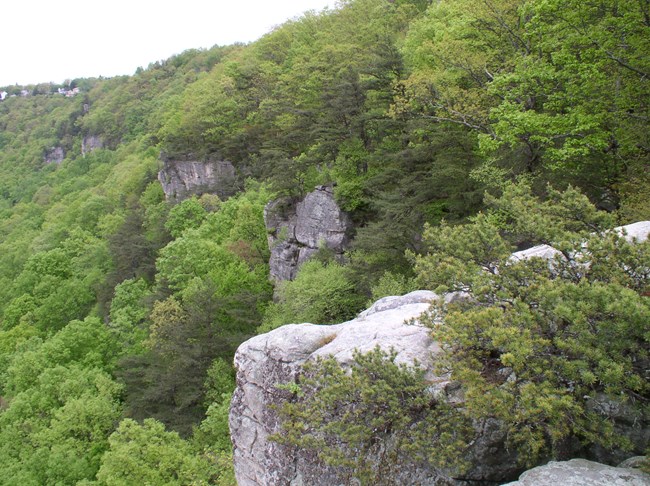
NPS Photo
Located on the border between Tennessee and Georgia, Chickamauga & Chattanooga National Military Park's 9,000 acres consist of several sites, representing Civil War battles fought during the fall of 1863 to gain control of Chattanooga, a key rail center and gateway to the heart of the Confederacy. Chickamauga Battlefield, the largest unit of the Park at 5,283 acres, contains globally rare limestone cedar glades, creek bluffs, willow oak ponds, and open fields which are either cut twice a year for hay or mowed regularly. Lookout Mountain, the second largest unit at 2,689 acres, is comprised of forested sandstone cliffs, and rich limestone slopes, containing many springs and caves.
The Cumberland Piedmont Network I&M program has provided this park with a vegetation community classification and map, a wetlands inventory, and updated vascular plant and vertebrate species lists. During the vegetation community classification work, 25 distinct associations were documented and mapped, including a globally rare type of limestone glade.
The network monitoring program includes five vital signs involving repeated visits to established sites following procedures set forth by each monitoring protocol. These five vital signs are: cave bats, forest vegetation communities, invasive species early detection, ozone/foliar injury, and water quality. Water quality monitoring began in 2003 and continues on a monthly schedule for two years "on," five years "off," at seven sites. Forest monitoring began in 2011–2012 with the establishment of 16 long-term monitoring plots. Additional plots will be established in upcoming years, followed by a five-year revisit schedule, occurring in early May. Ozone levels and foliar injury are assessed on-site every six years, beginning in 2010. The Invasive Species Early Detection protocol was completed in 2012 and will be used by field crews to monitor for priority exotics during their scheduled field work. Cave bat monitoring began in 2016 and continues annually for summer counts and every other year for winter counts.
Park managers are using inventory and monitoring data to create resource stewardship strategies for achieving desired future conditions. The links to inventory and monitoring reports are provided on this page.
For more Information contact:
Steve Thomas, Network Program Manager, CUPN offices at Mammoth Cave NP
Select a Park:
Select a Species Category (optional):
Visit NPSpecies for more comprehensive information and advanced search capability. Have a suggestion or comment on this list? Let us know.
Last updated: January 12, 2021
